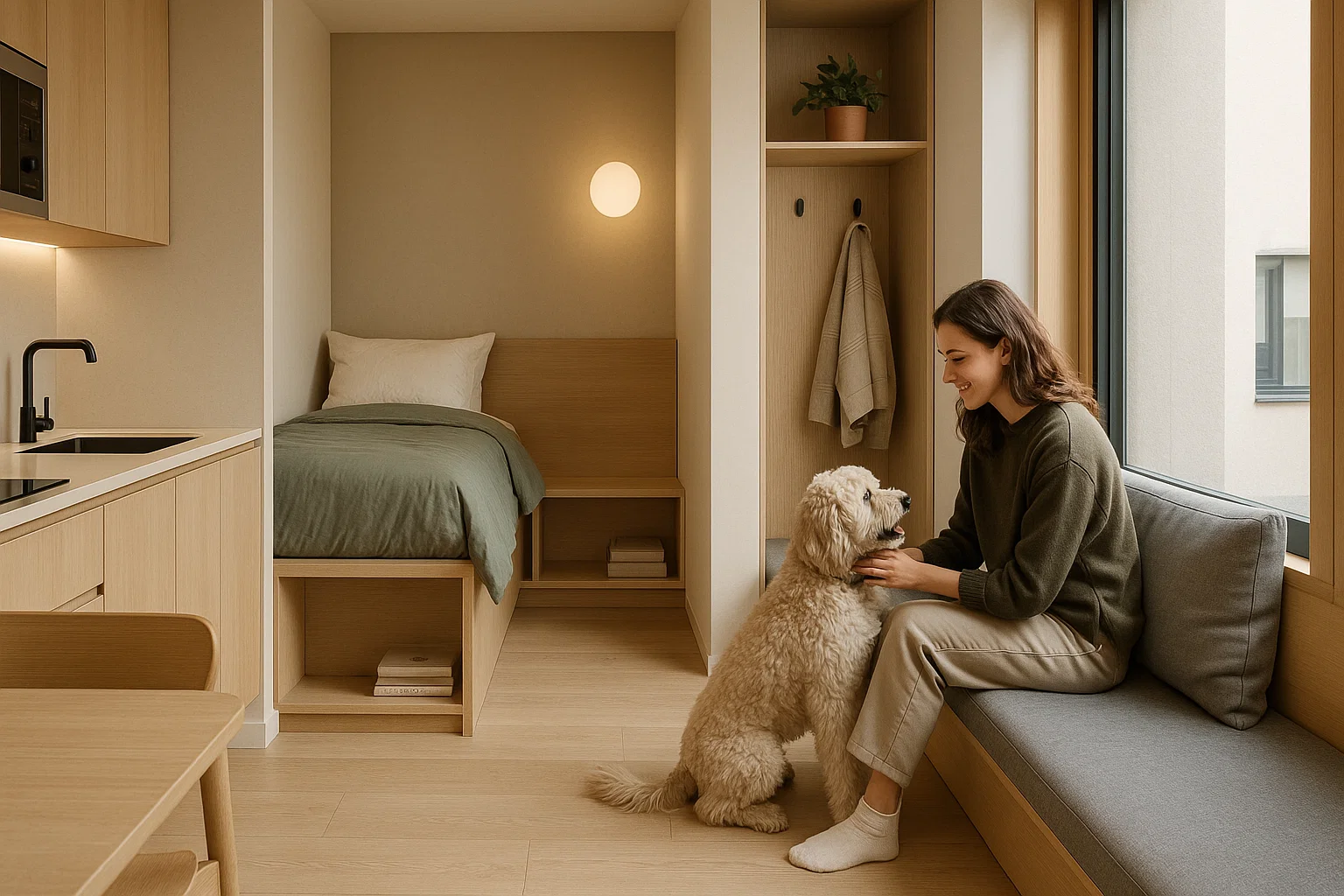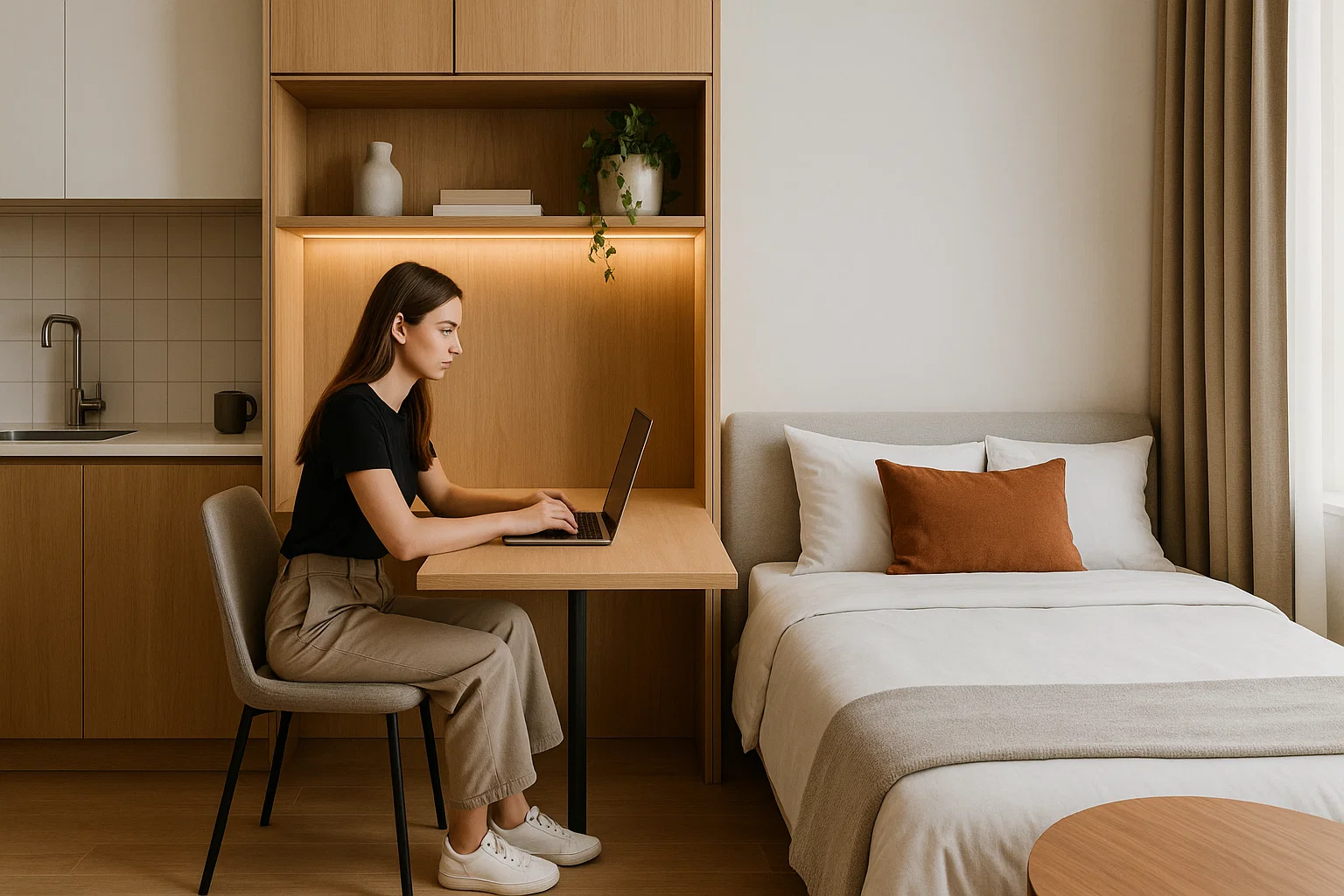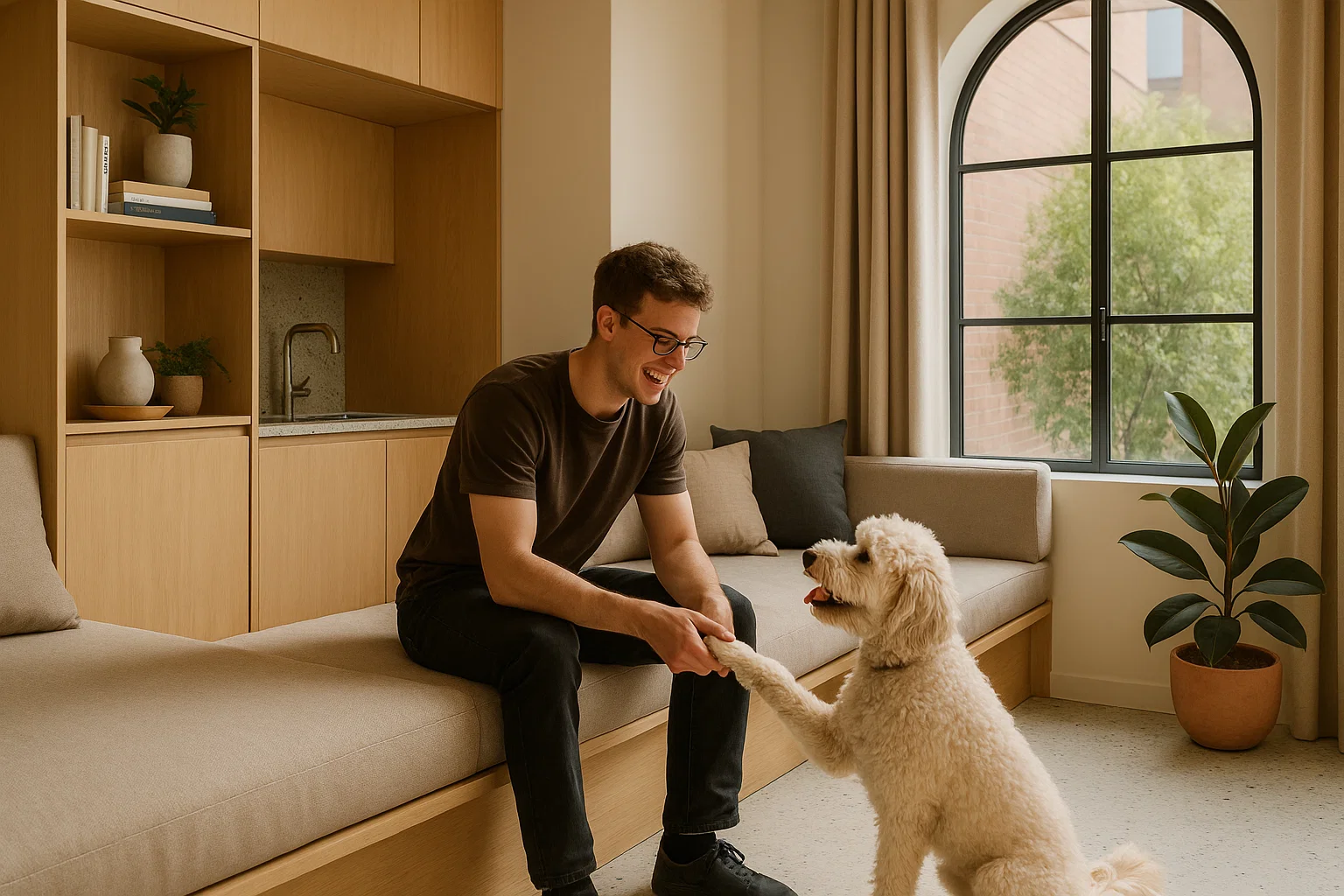
Beyond Tiny: Sydney’s Yuko is Redefining Urban Living with Intelligent Design
Forget everything you thought you knew about small-space living, especially in bustling city centers. We’re talking about places like Sydney, where urban density often means sacrificing personal real estate. But what if I told you there’s a brand pioneering a fresh take on city life that gives you both vibrant community and expansive personal freedom?
Enter Yuko, Australia’s groundbreaking co-living brand. The inspiration here? None other than the spirit of modernism, echoing Le Corbusier’s iconic notion of “the house as a machine for living”. Yuko isn’t just about sharing amenities; it’s meticulously designed for anyone craving connection while absolutely safeguarding their individual sanctuary.
The brilliance of Yuko truly shines in how it transformed a building originally intended as a boarding house, with existing layouts for bathrooms, kitchens, and walls. Faced with these pre-set “shells,” the designers created 33 distinct units. Our spotlight unit? A remarkably efficient 19 square meters (that’s about 205 square feet) of internal space, beautifully complemented by a generous 6-square-meter balcony – a vital extension of your living area.
The Design Breakthrough: Elevate for Ultimate Flexibility
The core design philosophy was all about maximizing “free space”. The goal was to create a zone where you could work, entertain, relax, or yes, even dance in your own apartment. Their stroke of genius? Elevating the bed. This simple, yet transformative decision allowed nearly everything else – aside from the private bathroom and kitchenette – to be cleverly tucked away underneath this queen-size sleeping platform.
Imagine this: a full-size wardrobe, a dining table, and a comfortable sofa – all custom-designed to fit perfectly beneath the bed. Let’s break down the smarts. The sofa, for instance, glides out on casters, and here’s the true design detail: it automatically brakes when weight is applied, ensuring stability wherever you position it. Ergonomically designed as a two-seater, it’s perfect for comfortably lounging and watching TV. And when you’re done? Guiding tracks ensure it slides smoothly and precisely back into its hidden alcove.
Even the steps leading up to your elevated bed pull double duty, ingeniously designed as handy drawers for extra storage. The wardrobe itself is a lesson in intelligent organization: one-third dedicated to shelving, and the rest for hanging clothes, with a thoughtful dropped bottom section specifically for shoe storage. Paneling isn’t just aesthetic; it creates a distinct, cozy “bedroom” feel while also forming a useful ledge. Plus, hooks are strategically placed to hang cushions and straps, keeping the floor plan clear and uncluttered.
Personalization & Adaptability: Making It Yours
A hallmark of great interior design is adaptability, and Yuko nails it. To truly make the space feel like home, they’ve created a custom “one unit” featuring a shelf, hooks, and a pin board – empowering residents to infuse their own personality. And for the modern professional or student, there’s a bookshelf unit that brilliantly transforms into a compact desk without you needing to move a single book – instant workspace on demand, without the clutter.
Community Meets Convenience
While each unit includes a small kitchenette for daily meals, the communal amenities elevate the co-living experience. Need to whip up a bigger feast or host friends? There’s a spacious, semi-commercial kitchen available in the communal room. And for daily convenience, each unit has its own compact bathroom, with communal laundry facilities located on the ground floor.
What truly sets Yuko apart is that these spaces weren’t designed for one specific type of person. Everything is movable, adaptable, and flexible. This project powerfully demonstrates how living in a compact footprint can actually grant you more freedom, because the space is meticulously designed to suit you. It’s a powerful echo of those modernist architects who sought to solve life’s challenges in the most beautiful and functional ways possible. And that, in my expert opinion, is the future of urban living.




